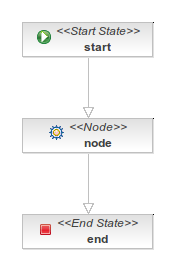Difference between revisions of "Use of node node"
From OpenKM Documentation
m |
|||
| Line 16: | Line 16: | ||
<source lang="java"> | <source lang="java"> | ||
public class MyAction implements ActionHandler { | public class MyAction implements ActionHandler { | ||
| − | + | @Override | |
| − | + | public void execute(ExecutionContext executionContext) throws Exception { | |
| − | + | System.out.println("Executing programmed action..."); | |
| − | + | // Go to next node | |
| − | + | executionContext.getProcessInstance().signal(); | |
| − | + | } | |
} | } | ||
</source> | </source> | ||
Revision as of 21:06, 13 January 2012
You can define the behavior of a node of type node suing the Action element. This Action is executed when the process arrives to the node.
The Action to be executed can be defined in two ways:
- Using a BeanShell script.
- Using an action handler, this is a Java class which implements the ActionHandler interface.
Below we are going to create a sample process with a node node which make use of an implementation of the ActionHandler interface.
In this image you can see the process definition graph:
This process begins in a start node and go to a node node where the action to be performed is defined by the class MyAction which implements the ActionHandler interface.
public class MyAction implements ActionHandler {
@Override
public void execute(ExecutionContext executionContext) throws Exception {
System.out.println("Executing programmed action...");
// Go to next node
executionContext.getProcessInstance().signal();
}
}
The last line of this action tell the jBPM engine to go to the next node, which in this case is the end node.
